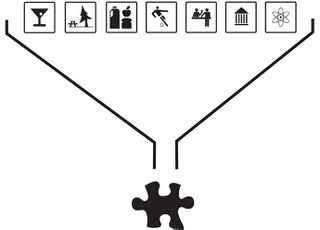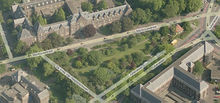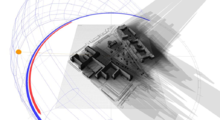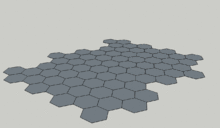atom07:Home
Contents |
Atom 07 Mission
In front of BK-City (Delft) lies the "De Vries van Heyplantsoen". In this park we are given the freedom to design an intervention to improve the given situation. By improving the (qualities of) site we try to let more people enjoy and experience the site. The goal of our proposal is to have more actors populate the site. In this way we make sure the qualities of the park won't get lost in time. By attracting people we add new/different qualities to the park - through an intervention which is able to adapt to the different needs of all the users. Simultaneously we will try to enrich ourselves with the Hyperbody way of thinking. The exact goals can be found under the Mission.
.
Analysis
To come up with a good understanding of the site and all of it's influences, it is a necessity to do a Analysis. The focus point of the analysis gives one a focus point for the continuation of the project. In the analysis it becomes clear that the site possesses several "nice park" quality's. From the analysis we deduced that the target group that we would like to focus on is the academic community. This park is a fringe condition between different institutions. Many surrounding built fabric resembles this community, even local inhabitants form part of this group. But what do these people need? And how can we make the optimal combination of these slightly different groups?
After our first analysis we have realised the need to have a deeper investigation and understanding of the site and actors. What are the qualities of the park? Where should the intervention take place? How big should it be? In the following few weeks, we will be concentrating on these questions - the investigation can be followed here:
Proposal
Normal 0 21 false false false EN-ZA X-NONE X-NONE
First and foremost architecture is the creation of a habitat for human living. It is the making of an environment to live and work in. Architect, Le Corbusier best describes remarkable spaces that he has experienced as ‘ineffable space’. He mentions that he is not a religious man, yet when entering certain spaces, a sense of spirituality is imbued in him. Architects are trained to think about space and how the notion of space can define one’s meaning of place. Architecture of today has lost its footing. It is not that traditional architecture of the past should be idealised, but we have become accustomed to interactive art-architecture. The ‘ineffable space’ that Le Corbusier speaks of has been lost and has been replaced by skin architecture. Advancements in technology have led to great achievements; the adaption of architecture into the digital age has been very sluggish.
What is important is that architecture has reached a new level of maturity, although we are still in the baby stages of digital architecture, the face of architecture has been changing drastically in the last few decades. Experimentation with interactive façade’s and flashing lights are only the precursor of what is yet to come. We have not yet been able to use these technologies to their full extent.
It is thus essential that the architect of today should attempt to move away from architecture as a visual stimulant, but rather go back to the roots of what architecture stands for - the creation of a healthy living environment for its users. The digital era has the responsibility to make better living conditions for its people. Future architecture will be more dynamic. Currently dynamic architecture is all the hype and is often used as concepts for new designs. Once the excitement of dynamic and interactive design has died down, we will find that true integration within design systems will be created.
The concept and drive for our design is the focus on architecture as an adaptable habitat, an Architecture that fulfils the needs of its inhabitants. The design is dynamic, but that is not important. What is essential in the concept is that through a dynamic structure more functions are able to take place simultaneously. This notion of changeable function creates the ultimate approach in architecture – the creation of space that allows for multiple and adaptable changes of programmes.
The intervention is able to provide people something new/extra, not yet available in the park. In order to do so we make an intervention which consists of different smaller elements. Together these elements are able to create different spaces and landscapes. At the same time these elements have some unique features dedicated to specific users. The shape, size and placement are yet to be determined for this Concept
(click on the picture to the right to see it move)
Future
In the Future this atom would like to get a better vision on the demands and behaviour of visitors to different functions. In this way the intervention would be a result of the possibilities it should be able to give, and the needs of the different functions. The challange will be to make 1 or more groups consiting out (more or less) generic elements which together merge in to something new. Further more we think it is interesting to join forces with Atom 6, the ideas of both atoms can be integrated without loosing any quality's of the individual concepts.
In the next fase of this project Atom 7 would like to try to convert this knowledge in to the shape/size/ fabrication of the intervention.
To focus more on the possebillity's of the intervention itself, a analysis on the possibillitys and dreams of the atom would be in place. In this way we can take a other approach starting from the intervention and match it to users and functions later. In order to do this we need a new analysis
References
The references for this project are widly spread. Different aspects of the intervention use different references.
- “I propose we leave math to the machines and go play outside.”
- - Calvin & Hobbes''
About Us - Archive - Contact Us



